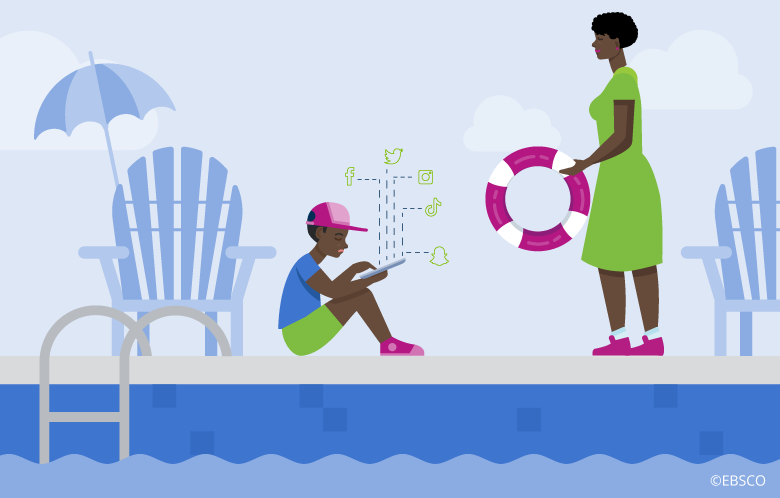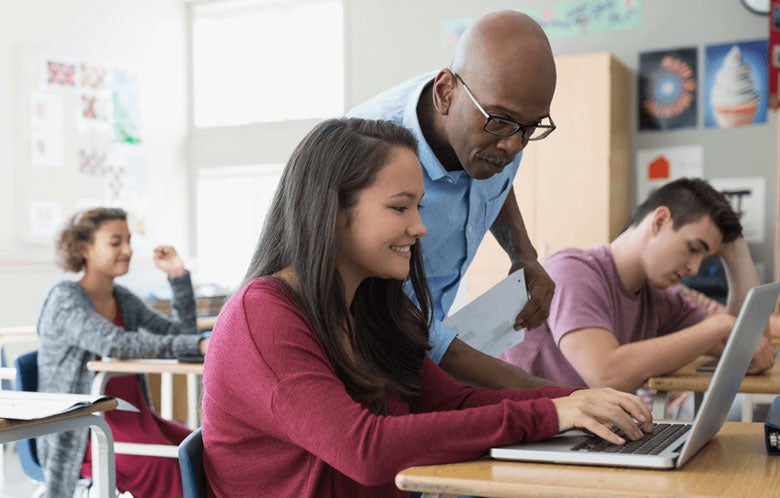Teaching children to use media resources has always been a priority during my 30 years as an educator. This priority has evolved over the course of my career, as has my role in teaching it. Today, we help students not only find reliable resources, but also become good digital citizens.
Digital citizenship is about more than online safety. It’s about creating thoughtful, empathetic human beings who can wrestle with important ethical questions at the intersection of technology and humanity. I love to borrow the analogy from educator and leadership consultant George Couros. Paraphrasing the words of a student, Couros said, “Social media is like water because it is everywhere in our life. We can ignore it and watch kids drown, or we can teach kids how to swim.”
During my time as a curriculum technology integrationist, I worked side by side with library media specialists helping students learn how to swim in a world where digital tools are literally in their pockets. We don’t want these devices to pull them under, so we give them the skills they need to successfully navigate the sea of media on their own.
Here are five steps librarians can follow in integrating digital citizenship into daily learning:
- Pack the beach bag. When middle school librarian Lane Stoltz and I sat down to develop our lessons, we used our curriculum standards to guide us. The American Association of School Librarians (AASL) offers Standards Crosswalks to help educators address AASL, ISTE, NGSS and Future Ready frameworks. We also looked to our North Dakota standards in the areas of Library and Technology Standards and Media Arts Content Standards for guidance.
- Swim with students. Model ethical technology use for students every day and incorporate conversations about it whenever technology is part of the lesson. The more we can authentically weave digital citizenship lessons into daily learning, the better.
- Provide flotation devices. When planning digital citizenship lessons, be sure to include “life vests” to help students stay afloat in the sea of social media. Leverage safe, high-quality digital content from websites such as Discovery Education Experience, Common Sense Education and BrainPop. These sites offer multimodal resources and lesson plans to help educators teach students about a variety of topics such as empathy, digital footprints, cyberbullying, sexting and more. Videos such as Brittney’s Story from Common Sense Education aim to teach students about the high price of posting damaging content online. Students may identify with the narrators of these stories and feel less isolated.
- Give students a practice lap. When students are learning new skills, they need to practice in a safe environment. Have them create digital footprints on Seesaw or play BreakoutEDU games, such as Social Butterfly, that focus on digital skills and netiquette. Invite students to post on classroom Twitter accounts, create and moderate student blogs, share reflections via table-top texting, and participate in Mystery Skypes. Providing students opportunities to practice their digital citizenship skills can help them avoid making mistakes on social media.
- Watch for signs of distress. Cyberbullying is serious, and it’s happening every day. Empower students with the skills to prevent bullying and monitor their progress. Invite them to share their concerns and mistakes navigating the digital world. Give students a voice in the conversation. Pose questions in a class discussion, eliminate misconceptions and misunderstandings, and allow them to make small mistakes in the safety net of school.
Lane and I wanted to share the same message, support and practice for our students on campus. We found power in our partnership and in working with other staff members in creating effective digital citizenship lessons. After all, our students are about to go out into the world. It’s important that we not only educate them academically, but also prepare them for a successful future ― online and off.



